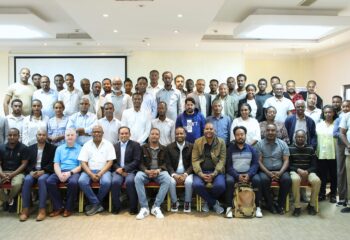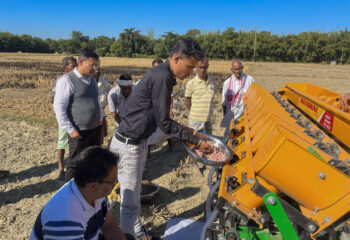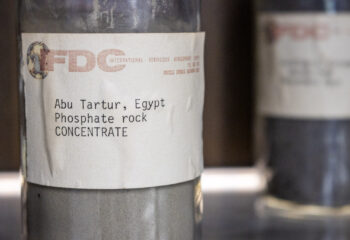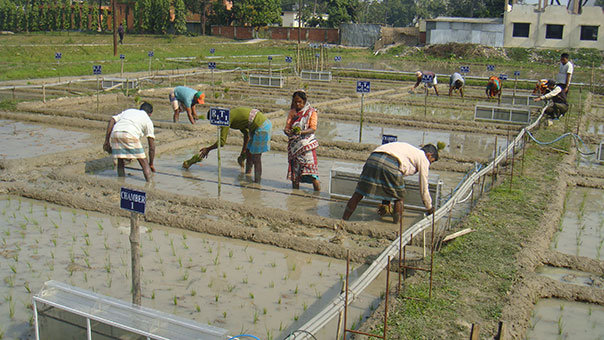
IFDC leads the way in greenhouse gas-reducing fertilizer technology. We teach farmers to fertilize their crops smarter and give them better tools to do so. As a result, more than 2 million Bangladeshi farmers – as well as many in sub-Saharan Africa – are reducing rice-growing emissions by up to 30 percent. Below is a piece from Dr. Upendra Singh describing our research.
By Dr. Upendra Singh
Improving efficiency of nitrogen fertilizer use has been the major focus of research at IFDC. Our scientists have often played a lead role in quantifying ammonia volatilization loss and denitrification loss from flooded rice fields. Over the years, we have worked on improving nitrogen use efficiency (NUE) with urea deep placement, inhibitors and slow and controlled N fertilizers, including polymer- and sulfur-coated fertilizers. This has been supported by a USAID-funded research grant since the early years of the work and in the recent past, funded by the BFS-SFT project grant. During 1993-1996, in partnership with the Tennessee Valley Authority (TVA) and International Rice Research Institute (IRRI), IFDC began greenhouse gas (GHG) emission trials to quantify nitrous oxide and methane. And most recently, since in 2013, IFDC and its partners has been quantifying GHG emissions at two locations in Bangladesh and at the Muscle Shoals headquarters.
Due to our focus on improving NUE, we have placed greater emphasis on mitigating nitrous oxide (N2O) and nitric oxide (NO) emissions. In addition to its global warming effect, which is 298 times more potent than carbon dioxide, N2O is now the dominant gas responsible for ozone destruction. The global mean fertilizer-induced emissions for N2O and NO are equivalent to 0.98 million tons per year and 0.76 million tons per year, respectively. With total N fertilizer consumption at 109 million tons, increasing at 1 million tons per year, N2O and NO emissions are expected to continue as such unless mitigation options are implemented.
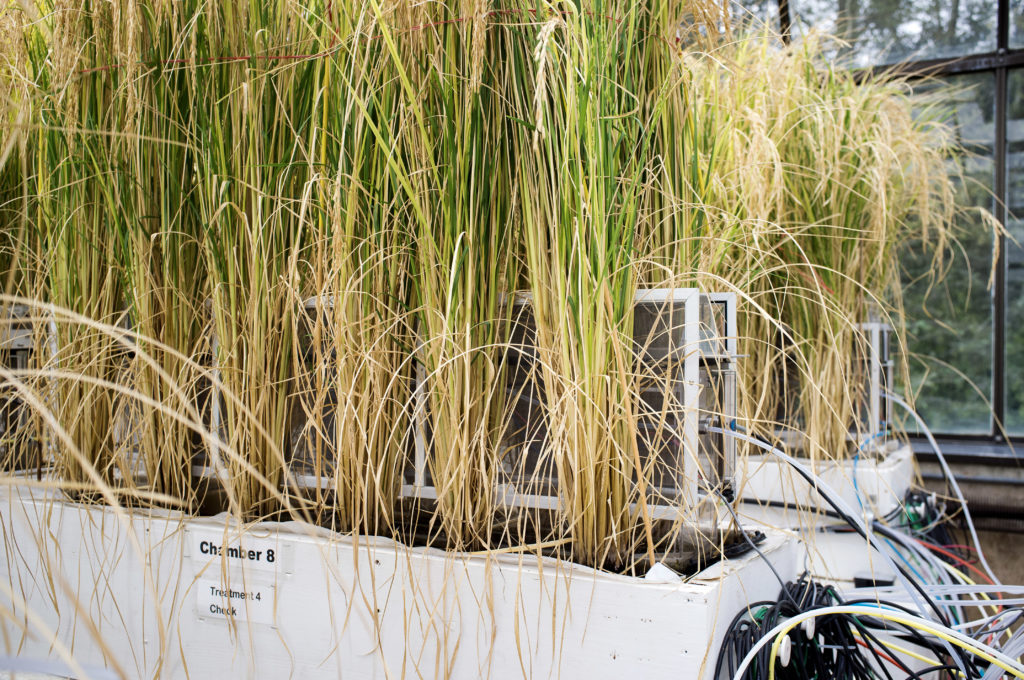
Our preliminary results from the ongoing GHG research have shown that N2O and NO emissions from fertilizers can be controlled to emissions similar to unfertilized plots. The most promising results for mitigating N2O and NO emissions were obtained with urea deep placement (UDP) under flooded conditions where emissions were significantly lower than with broadcast application of urea. Under alternate wetting and drying (AWD) conditions, UDP reduced emissions, but overall emissions were higher than under continuously flooded conditions. The quantification and reduction of GHG emissions associated with management practices in rice fields in Bangladesh provides opportunities for farmers and policymakers to gain carbon credits.
To provide critical information on use and expansion of UDP under direct-seeded rice, last summer we began quantifying the effect of UDP versus conventional urea application on yield, nutrient uptake and nitrogen emissions. The GHG research facility at IFDC headquarters allows us to quickly evaluate climate-smart fertilizers and technologies that have potential to improve efficiency and reduce N emissions.
If we are to mitigate fertilizer’s contribution to GHG emissions, research must be ongoing. These projects and others will enable smallholders to both adapt to and mitigate climate change.

